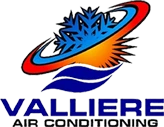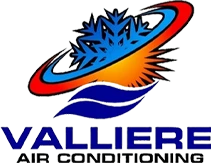Embarking on a journey into the realm of HVAC systems, we delve into the intricate workings of heat pumps—a marvel of energy-efficient technology that can redefine indoor comfort. Whether contemplating a heat pump installation in Magnolia, TX, or exploring innovative HVAC solutions, understanding the science behind these systems is crucial. Trust your journey to optimal indoor comfort with Valliere Air Conditioning & Heating, LLC, a BBB A+ rated and licensed company committed to delivering top-tier HVAC solutions tailored to your needs.
What Is A Heat Pump? The Dual Magic Of Heat Pumps Unveiled
Before we delve into how a heat pump works, let’s first understand what a heat pump is. A heat pump is a cutting-edge HVAC system designed to efficiently regulate indoor temperatures by transferring heat between indoor and outdoor environments. In contrast to traditional heating systems that rely on heat generation, a heat pump operates on the innovative principle of extracting warmth from the ambient air or the ground, depending on the specific type of system in use. This technology allows heat pumps to provide a dual function, serving as heating and cooling solutions. By harnessing the natural warmth inherent in the air or ground, heat pumps offer a versatile and energy-efficient approach to maintaining optimal indoor conditions throughout the year.
Understanding Heat Pump Variants: Types For Every Climate
Different types of heat pumps are designed to suit various applications and environmental conditions. Let’s explore the common types of heat pumps:
- Air Source Heat Pumps:
Air source heat pumps are the most common type and are well-suited for moderate climates. These systems extract heat from the outdoor air during the heating season and expel heat outdoors during the cooling season. It consists of the following key components:- Evaporator Coil: This component absorbs heat from the outdoor air.
- Compressor: The compressor pressurizes the refrigerant gas, raising its temperature.
- Condenser Coil: The condenser coil releases heat into the indoor space during the heating season and absorbs heat during the cooling season.
- Refrigerant Lines: These lines facilitate the movement of refrigerant between the indoor and outdoor units
- Ground Source Heat Pumps or Geothermal Heat Pumps:
Geothermal heat pumps are highly efficient and can be used in various climates. These systems harness the constant temperature of the ground to transfer heat. The critical components of a geothermal heat pump system include:- Ground Loop: This loop of underground pipes captures heat from the earth during the heating season and dissipates heat into the ground during the cooling season.
- Heat Exchanger: The heat exchanger transfers heat between the refrigerant and the ground loop.
- Compressor and Refrigerant Circuit: Like air source heat pumps, geothermal heat pumps use a compressor and refrigerant to transfer heat.
- Water Source Heat Pumps:
Water source heat pumps are often used in larger buildings or where a water source, such as a lake or river, is readily available. These systems use water as a heat exchange medium. The key components include:- Water Loop: Instead of an air or ground loop, Water source heat pumps use a water loop to exchange heat with a water source.
- Heat Exchanger: A heat exchanger facilitates heat transfer between the refrigerant and the water loop.
- Compressor and Refrigerant Circuit: Like air source and ground source heat pumps, water source heat pumps employ a compressor and refrigerant circuit to move heat.
The versatility and efficiency of heat pumps make a compelling choice for those seeking a modern HVAC solution that aligns with environmental consciousness and cost-effectiveness. But remember, regular maintenance and timely heat pump repair in Cypress, TX, to keep these systems running efficiently.
Unlocking The Secrets: How Does A Heat Pump Work?
Now that we’ve classified the types of heat pumps, let’s dive into how each type works:
- Air Source Heat Pumps:
- Heat Absorption: During the heating season, the heat pump evaporator coil absorbs heat from the outdoor air. This coil contains a refrigerant that evaporates at low temperatures.
- Compressor Action: The compressor then pressurizes the low-temperature, low-pressure refrigerant gas. This action raises the refrigerant’s temperature.
- Heat Release: The hot, pressurized refrigerant is circulated to the condenser coil, releasing heat into the indoor space. This process provides warmth for your home.
- Cooling Mode: In the cooling season, the cycle reverses. The indoor coil becomes the evaporator, absorbing heat from inside your home. The heat is then released outdoors.
- Ground Source Heat Pumps:
- Heat Exchange With The Ground: These heat pumps utilize the earth’s constant temperature. The ground loop captures heat from the earth during the heating season using a fluid (usually water or a mixture of water and antifreeze) that circulates through a series of underground pipes.
- Heat Transfer: The heat exchanger in the heat pump transfers heat between the fluid in the ground loop and the refrigerant in the heat pump.
- Cooling Mode: During the cooling season, the process reverses, with the heat pump extracting heat from the indoor space and dissipating it into the ground.
- Water Source Heat Pumps:
- Heat Exchange with Water: These heat pumps utilize a water source, such as a lake or river, as a heat exchange medium. A water loop circulates water through the system.
- Heat Transfer: The heat exchanger facilitates heat transfer between the refrigerant in the heat pump and the water loop.
- Compressor Action: The compressor increases the temperature of the refrigerant, allowing it to release heat into the indoor space during the heating season.
- Cooling Mode: In the cooling season, the water source heat pump reverses the cycle, extracting heat from the indoor space and transferring it to the water loop.
- External Components To Watch:
To ensure your heat pump’s optimal performance and longevity, monitoring and maintaining the external components is essential. These components may vary depending on the type of heat pump, but some general considerations apply:- Air Filters: Air source heat pumps and air handlers (used in all types) have air filters that should be cleaned or replaced regularly. Dirty filters reduce airflow and make the system less efficient.
- Refrigerant Lines: Examine the refrigerant lines thoroughly for any indications of leaks. Leaking refrigerant can reduce the heat pump’s efficiency and should be addressed promptly.
- Coil Cleaning: Conduct an inspection and cleaning of the evaporator and condenser coils. Dirty coils can reduce the system’s efficiency.
- Heat Exchanger Inspection: Regular heat exchanger inspection for ground and water source heat pumps is crucial to maintain efficient heat transfer.
- Ductwork: In systems that use ducts, ensure they are adequately sealed and insulated to prevent heat loss and maximize energy efficiency.
- Thermostat Settings: Properly set and program your thermostat to avoid unnecessary heating or cooling, which can strain the heat pump.
Experience Total Comfort and Efficiency with Valliere Air Conditioning & Heating, LLC
As we traverse the world of heat pumps, it’s evident that these systems stand as a beacon of efficiency and environmental consciousness in heating and cooling solutions. If you’re considering upgrading to a new, modern heat pump replacement in The Woodlands, TX, don’t hesitate to contact us at Valliere Air Conditioning & Heating, LLC. Our team of experts is ready to guide you through the process and provide a tailored solution to meet your specific needs. Connect with us on social media platforms to stay updated on the latest HVAC trends, energy-saving tips, and exclusive offers.
Contact us today and take the first step toward a more sustainable and comfortable future for your home.









